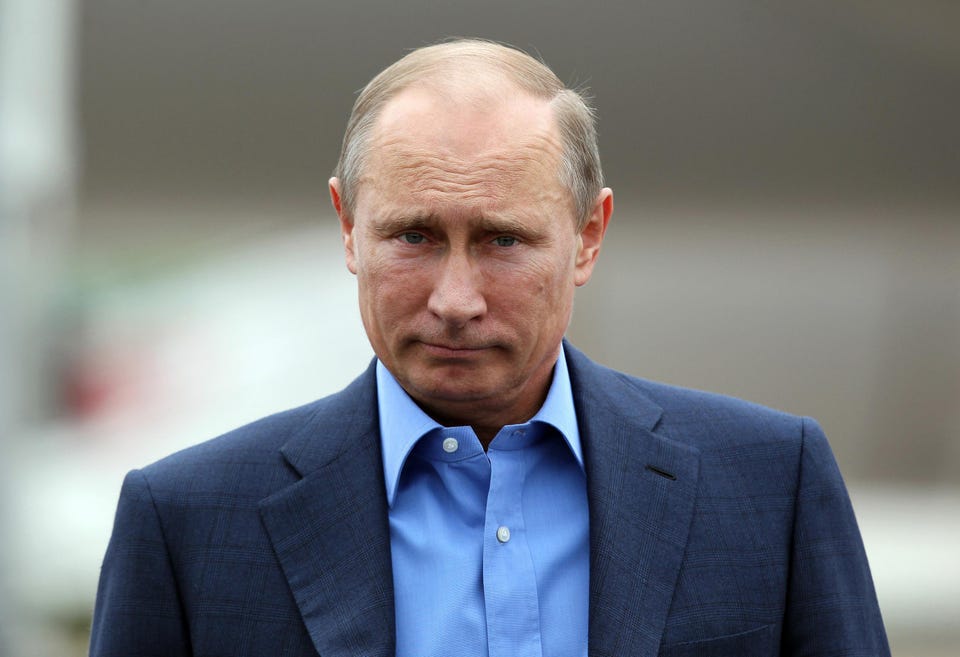Energy A Russian Oil Price Cap Would Lock The Barn After The Door Is Closed Michael Lynch Senior Contributor Opinions expressed by Forbes Contributors are their own. I analyze petroleum economics and energy policy. New! Follow this author to improve your content experience.
Got it! Jul 19, 2022, 07:24am EDT | New! Click on the conversation bubble to join the conversation Got it! Share to Facebook Share to Twitter Share to Linkedin Russian President Vladimir Putin (Photo by Peter Muhly – WPA Pool/Getty Images) Getty Images A number of governments are pushing to put a cap on the price of oil that Russia sells to them in order to punish it for the Ukrainian invasion. (Q: What’s the Russian for ‘Ukrainian invasion’? A: ‘Siberia’) The idea being that reducing their oil revenues will make them more eager to come to the negotiating table. Unfortunately, it seems likely to have little or no effect, given the structure of the proposal and the nature of the oil market.
In April, the IEA speculated that May’s Russian production might drop by 2. 5 mb/d because of sanctions, formal or otherwise, but the reality proved much less, perhaps 1 mb/d. Oil markets are fungible and while it is no doubt annoying and even costly—some Russian sales were said to be discounted by $30/bbl—the market has a long history of shifting supplies around to new customers.
Indeed, uninformed observers are sometimes shocked to hear that U. S. imports from, say, Saudi Arabia dropped or rose sharply in a given month, not aware that such fluctuations are common.
In the 1973 oil crisis, the world oil trade was mostly controlled by the Seven Sisters who shifted supplies around so that no given nation suffered unduly. By 1990, when Iraqi and Kuwaiti oil was off the market, the price barely budged because the spot market efficiently reallocated supplies. An IEA official later said at an M.
I. T. seminar that Turkey, which was a major importer of Iraqi oil, had asked the organization for help under the Emergency Sharing System (which wasn’t then and has never been formally invoked), and the organization located supply for them.
But the oil was on the U. S. Gulf Coast and was available for the spot price—plus shipping to Turkey.
The Turks decided that they could purchase spot oil in the Mediterranean market and save the shipping. Like the European sanctions against purchases of Russian oil, the price cap as currently proposed would not take effect immediately but later this year. Although oil prices have bounced back in recent days from last week’s drop, expectations are that the market balance will continue to improve this quarter and next, partly because of weaker demand but mainly because of mild increases in supply from OPEC+ and larger increases from non-OPEC, including from Canada, Guyana, and the U.
S. The IEA’s latest Oil Market Report projects an inventory increase in the second half of 2022 on the order of about 1. 5 mb/d, or nearly 300 million barrels, about enough to bring inventory to ‘normal’ levels as the figure below shows.
(The figure shows only OECD inventories, and I have assumed approximately half the inventory build goes to the OECD. ) OECD inventories (mb) The author from IEA data. MORE FOR YOU Here’s The List Of 317 Wind Energy Rejections The Sierra Club Doesn’t Want You To See Revisiting The Blame For High Gas Prices Why Do ‘Fracking’ Opponents Ignore Its Moral Benefits? The other aspect, which the public has a hard time understanding, is that prices do not just respond to market fundamentals but to expectations, specifically of the oil traders.
The price rose not because Russian supply declined in April and May, but because traders expected the EU would impose sanctions on Russian oil and this would reduce their exports further, as mentioned. When the sanctions are fully in effect, the price reaction will be far in the past and there is just as likely to be a ‘buy on the rumor, sell on the news,’ effect. But, as recent days have shown, it increasingly appears as if the impact on Russian supplies has been overestimated and by the time the sanctions are fully in place, the market will long since have adjusted.
Fears that oil prices will go to $150 or $200 per barrel later this year seem based much more on expectations that the impact of the sanctions will bite then, but that horse is already out of the barn, won its race, and been put out to stud. Coming days and weeks will see wild fluctuations in prices with news from Russia, the Middle East, Libya, Venezuela, Iran (and the JCPOA negotiations), but it appears the current price trend is downward, the tightness period of the market having passed earlier, as the above figure shows. What will next year bring? Uncertainty and volatility.
Also, weather, economic growth, political difficulties and the death of numerous celebrities. All predicted with confidence. Follow me on Twitter or LinkedIn .
Check out my website . Michael Lynch Editorial Standards Print Reprints & Permissions.
From: forbes
URL: https://www.forbes.com/sites/michaellynch/2022/07/19/a-russian-oil-price-cap-would-lock-the-barn-after-the-door-is-closed/



